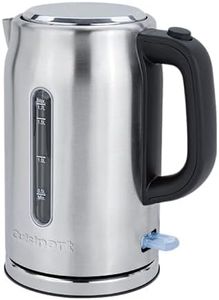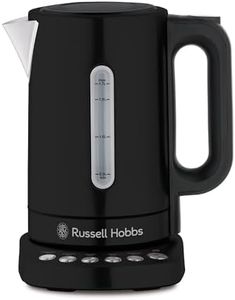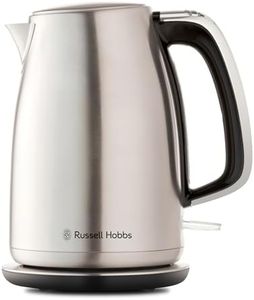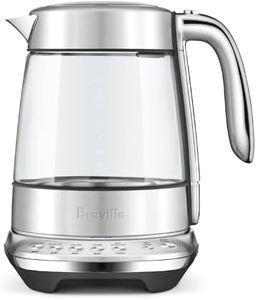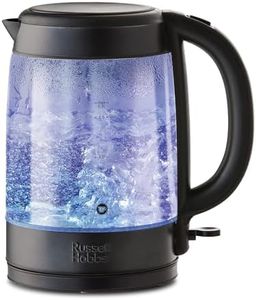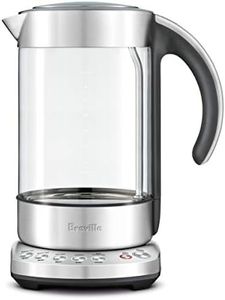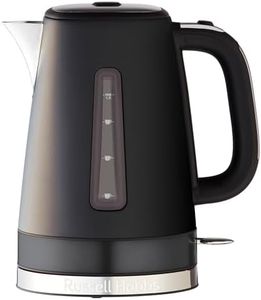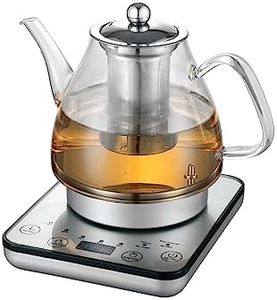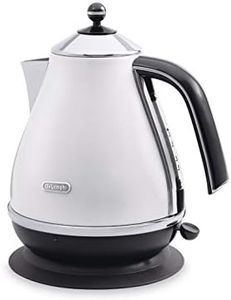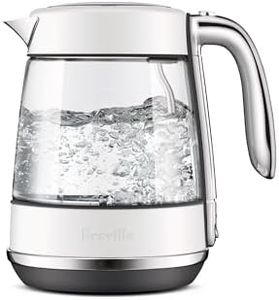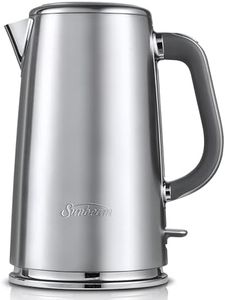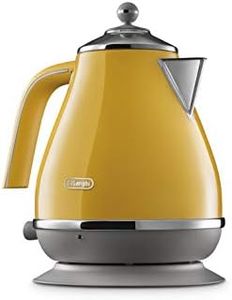We Use CookiesWe use cookies to enhance the security, performance,
functionality and for analytical and promotional activities. By continuing to browse this site you
are agreeing to our privacy policy
10 Best Electric Kettle Brand
From leading brands and best sellers available on the web.By clicking on a link to a third party's website, log data is shared with that third party.
Buying Guide for the Best Electric Kettle Brand
Choosing the right electric kettle is all about matching its features to your daily routine and lifestyle. With so many models and brands available, it's important to focus on key features that can directly affect your experience, like speed, convenience, safety, and durability. To make a smart choice, think about how you plan to use the kettle: Are you heating water for a single cup or serving a crowd? Do you want extra features or just basic boiling? Understanding the main specifications will help you shop confidently and pick a model that fits your needs best.CapacityCapacity refers to how much water the kettle can hold and boil at once, usually measured in liters. If you’re often making drinks for a group, a larger capacity (like 1.7 liters or more) is useful. For solo or small household use, a smaller capacity (around 1 to 1.2 liters) can be quicker to boil and take up less space. Consider your typical usage—if you just need a cup or two, a smaller kettle suffices; for families or entertaining, larger capacity saves time.
Boil Speed / Power (Wattage)This spec tells you how fast the kettle can heat water, with power measured in watts. Higher wattage (about 2200–3000W) boils water more quickly but may use more electricity, while lower wattage (under 1500W) is slower but can be more energy efficient. If you're in a rush in the mornings, faster boiling is convenient; if you’re not in a hurry, a lower wattage might be just fine.
MaterialKettles come in different materials like stainless steel, glass, and plastic. Stainless steel is durable and tends to retain heat well; glass looks appealing and allows you to see water levels and boiling, but can be fragile; plastic is lightweight and often cheaper, but can stain or hold odors over time. Choose material based on your preference for looks, durability, and ease of cleaning.
Temperature ControlSome kettles allow you to select specific temperatures, which is handy if you make a variety of drinks (like green tea or coffee) that brew best at different heats. Basic kettles only boil water to 100°C, while more advanced ones offer a few presets or even precise controls. If you are particular about brewing methods or drink a lot of specialty teas or coffee, look for this feature; if you just want boiling water, a standard model will do.
Safety FeaturesKey safety features include automatic shutoff when water reaches boiling, boil-dry protection (the kettle turns off if there’s no water), and cool-touch exteriors to prevent burns. If you have children or are often multitasking, these safety features add peace of mind. Consider your household: more safety features are especially important in busy or family settings.
Ease of CleaningDetachable lids, wide openings, and removable filters make cleaning an electric kettle simpler and help prevent limescale buildup. If you live in an area with hard water, or use your kettle frequently, easy cleaning will keep it working well and tasting fresh. If you hate scrubbing, prioritize features that help with cleaning.
Cordless Design and BaseA cordless kettle refers to one that sits on a separate base and can be lifted off and poured without being tethered by a power cord. Some bases even allow the kettle to rotate 360 degrees. This design improves convenience and safety, especially in limited counter space. If you want easy filling and pouring, look for this feature.
